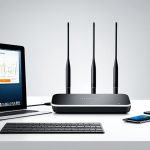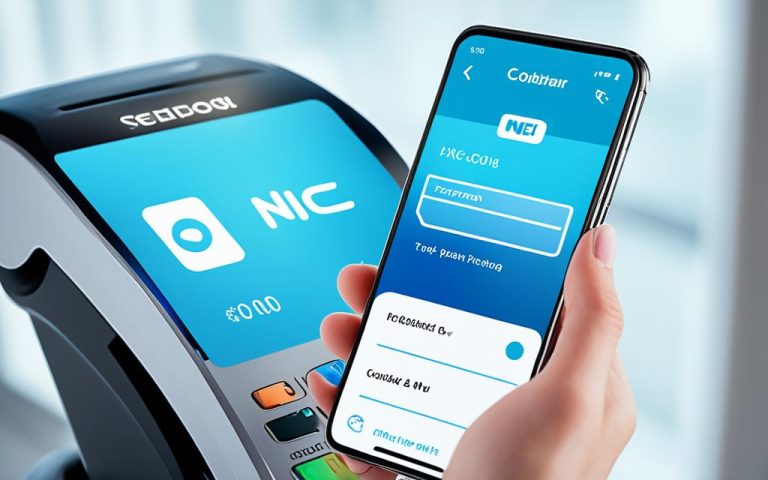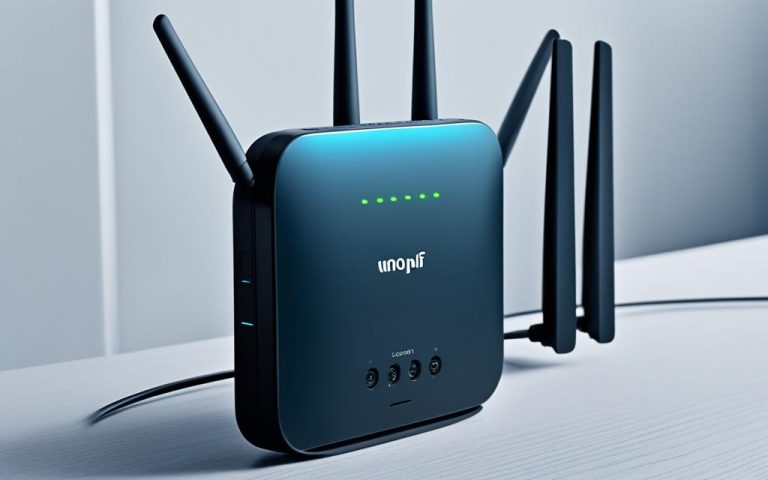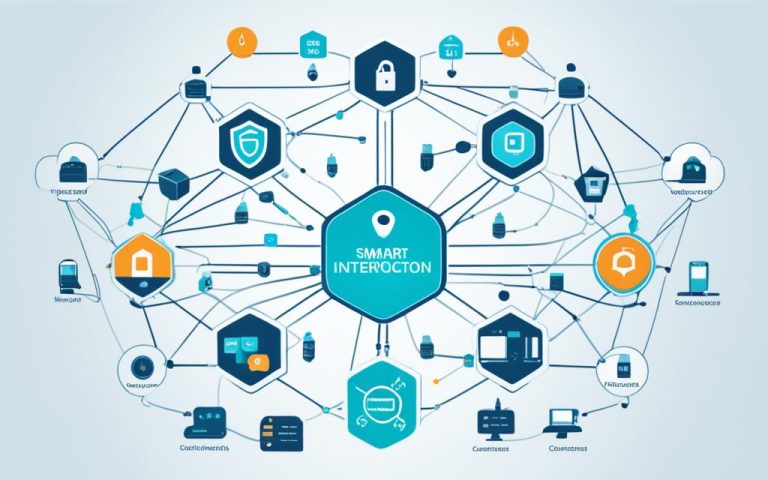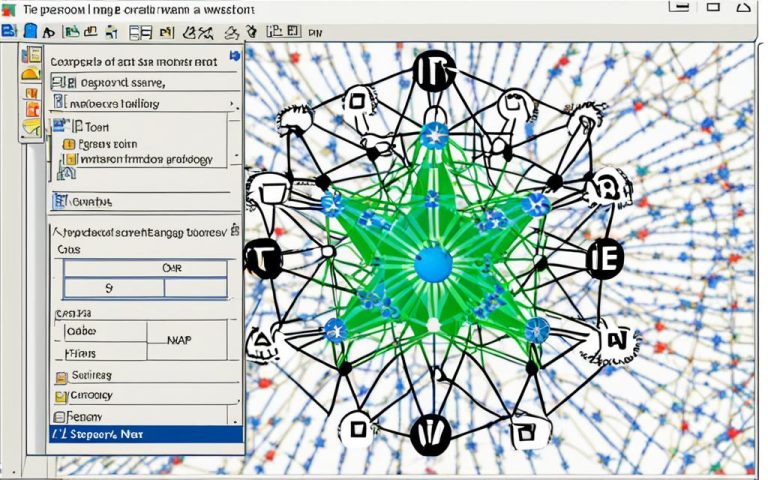Are you looking for a wireless technology that revolutionizes fitness and health monitoring? Look no further than the ANT+ Protocol. Developed by ANT Wireless, the ANT+ Protocol is a cutting-edge wireless technology that supports advanced metrics and real-time monitoring in fitness devices. Whether you’re a professional athlete or a fitness enthusiast, this protocol offers a range of benefits for personal area networks (PANs).
With the ANT+ Protocol, manufacturers can implement device profiles to provide runners with accurate and insightful data on their performance. By utilizing ANT+ RD and HR-RD device profiles, fitness devices can track running dynamics like cadence, ground contact time, and stride length. These profiles can be used in conjunction with compatible sensors and displays, such as Garmin’s Running Dynamics Pod and Forerunner 935 GPS watch, enhancing training and improving performance in real-time.
In addition to the benefits for athletes, the ANT+ Protocol offers advantages in personal area networks. Its interoperability infrastructure ensures seamless wireless connectivity between ANT+ enabled devices, enabling easy collection and transfer of sensor data. This standardized communication platform simplifies the development process for application developers, sensor manufacturers, and cell phone makers, resulting in quick-to-market solutions.
With over 250 million devices in the market, the ANT+ Protocol has established an ecosystem of world-class technology vendors in the ANT+ Alliance. The alliance offers a wide range of certified products, spanning sport, wellness management, and home health monitoring applications. Whether you’re monitoring your heart rate during a workout or managing your overall wellness, ANT+ has got you covered.
The Benefits of ANT+ Protocol in Personal Area Networks
The ANT+ Protocol, built on the ANT protocol, is an interoperability infrastructure that enables seamless wireless connectivity between ANT+ enabled devices. It defines device profiles that specify data formats and channel parameters, allowing for easy collection and transfer of sensor data. ANT+ is widely used in sport, wellness management, and home health monitoring applications.
One of the key advantages of the ANT+ Protocol is its ability to provide a standardized communication platform for personal area networks (PANs). This allows for quick-to-market solutions for application developers, sensor manufacturers, and cell phone makers, fostering innovation and expanding the range of compatible devices and applications.
With over 250 million devices in the market, the ANT+ Protocol has created an ecosystem of world-class technology vendors in the ANT+ Alliance. This alliance offers a wide range of certified products, ensuring compatibility and reliability. The ANT+ Alliance provides a collaborative platform for technology companies to develop, test, and certify their products, ensuring interoperability and seamless integration.
Benefits of ANT+ Protocol in Personal Area Networks:
- Enhanced Connectivity: The ANT+ Protocol enables wireless connectivity between multiple devices within a personal area network, allowing for seamless data transfer and communication. This facilitates the integration of different types of sensors and devices, improving the overall functionality and user experience.
- Low Power Consumption: The ANT+ Protocol is designed to minimize power consumption, making it suitable for battery-powered devices and energy-efficient applications. This ensures extended battery life and reduces the need for frequent recharges or battery replacements.
- Flexibility and Scalability: ANT+ supports up to 8 channels, providing flexibility for the integration of multiple sensors and devices. This allows for the creation of customized personal area networks tailored to specific applications and user requirements. Additionally, the protocol can be easily scaled to accommodate larger networks or new devices, ensuring future-proof connectivity solutions.
- Wide Compatibility: The ANT+ Protocol has gained widespread adoption in the fitness and health monitoring industry, making it compatible with a wide range of devices, including heart rate monitors, activity trackers, fitness equipment, and mobile applications. This compatibility enables users to choose from a variety of devices and applications that suit their preferences and needs.
Overall, the ANT+ Protocol offers numerous benefits for personal area networks, ranging from enhanced connectivity and low power consumption to flexibility and wide compatibility. Its widespread adoption and support from the ANT+ Alliance make it a reliable and well-established technology in the field of wireless connectivity for fitness and health monitoring applications.
| Benefits | Description |
|---|---|
| Enhanced Connectivity | The ANT+ Protocol enables seamless wireless connectivity between multiple devices within a personal area network, facilitating data transfer and communication. |
| Low Power Consumption | The ANT+ Protocol minimizes power consumption, ensuring extended battery life for devices in personal area networks. |
| Flexibility and Scalability | ANT+ supports multiple channels, allowing for the integration of various sensors and devices, with the ability to scale the network as needed. |
| Wide Compatibility | The ANT+ Protocol is widely adopted and compatible with a range of fitness and health monitoring devices, providing users with a variety of options. |
By leveraging the benefits of the ANT+ Protocol, personal area networks can unlock the full potential of wireless connectivity, revolutionizing fitness and health monitoring experiences for users.
The Technical Details of the ANT+ Protocol
The ANT+ Protocol is a wireless communications technology that operates in the 2.4 GHz ISM band, similar to Bluetooth low energy. It utilizes a protocol stack to establish standard rules for co-existence, data representation, authentication, and error detection, ensuring seamless wireless communication between ANT+ enabled devices.
The ANT+ Protocol supports three types of messaging: broadcast, acknowledged, and burst. Broadcast messages allow data to be sent to multiple devices simultaneously, while acknowledged messages provide reliable and error-checked communication. Burst messages enable rapid data transfer between devices. This versatile messaging system caters to the specific requirements of different applications.
One of the key advantages of the ANT+ Protocol is its low power consumption. It can be configured to enter a low-power sleep mode for extended periods, waking up briefly to transmit or receive data. This energy-efficient operation makes it ideal for battery-powered devices and sensor networks that require long-lasting performance.
Each ANT+ channel consists of transmitting and receiving nodes to facilitate bidirectional communication. The protocol accommodates up to 8 channels, allowing multiple devices to operate simultaneously without interference. With a range of 30 meters at 0 dBm, ANT+ offers sufficient coverage for personal area networks and sensor deployments.
The ANT+ Protocol operates at low data rates, enabling efficient transmission of information while minimizing power consumption. This makes it particularly suitable for applications involving health and fitness monitoring, where continuous data collection is essential.
To summarize, the ANT+ Protocol’s technical details, including its wireless communications capabilities, low power consumption, and support for multiple messaging types, make it a robust and efficient solution for wireless sensor networks and personal area networks.
ANT+ Protocol in Telemedical and Telehealth Systems
The ANT+ Protocol has proven to be highly effective in telemedical and telehealth systems, revolutionizing the way healthcare is monitored and managed remotely. One notable example is the i-Residence system developed by Spantec, which utilizes ANT+ ULP wireless technology to detect medical emergencies in various settings, including nursing homes, hospitals, and private households.
This innovative system incorporates ANT+ compatible devices and wireless relay bridges to establish a seamless connection with a GSM-based modem. By leveraging the ANT+ Protocol, i-Residence can accurately detect and classify emergency situations, such as falls, and promptly send alerts to designated rescue centers, reliable relatives, or nearby neighbors. These alerts can be conveyed through phone calls, SMS notifications, or visual interfaces, ensuring swift response and necessary intervention.
By integrating the ANT+ Protocol into telemedical and telehealth systems, remote monitoring becomes more efficient, cost-effective, and reliable. The protocol enables the seamless collection and transmission of vital medical data, allowing healthcare professionals to monitor patients remotely and make informed decisions based on real-time information. This level of remote monitoring significantly reduces the need for frequent hospital visits, minimizes healthcare costs, and improves patient outcomes.
“The integration of the ANT+ Protocol in our telemedical systems has revolutionized the way we provide healthcare services. With real-time monitoring and immediate notifications, we can ensure that patients receive timely medical interventions, even in remote locations.”
– Dr. Maria Thompson, Chief Medical Officer, Spantec
Key Advantages of ANT+ Protocol in Telemedical Systems:
- Seamless integration with telehealth devices and wireless relay bridges
- Accurate detection and classification of medical emergencies
- Prompt alerts and notifications to designated rescue centers, relatives, and neighbors
- Real-time remote monitoring of patients’ health metrics
- Significantly reduces healthcare costs by minimizing hospital visits
- Enhances patient outcomes through timely medical interventions
To further illustrate the impact of the ANT+ Protocol in telemedical systems, the table below provides a comparison between traditional healthcare monitoring methods and the advantages offered by ANT+ remote monitoring:
| Traditional Healthcare Monitoring | ANT+ Remote Monitoring |
|---|---|
| Requires frequent hospital visits for monitoring | Allows remote monitoring from the comfort of home |
| Higher healthcare costs associated with hospital visits | Significantly reduces healthcare costs through remote monitoring |
| Delays in accessing real-time patient data | Enables immediate access to real-time health metrics |
| Limited intervention capabilities during emergency situations | Quick alerts and timely medical interventions during emergencies |
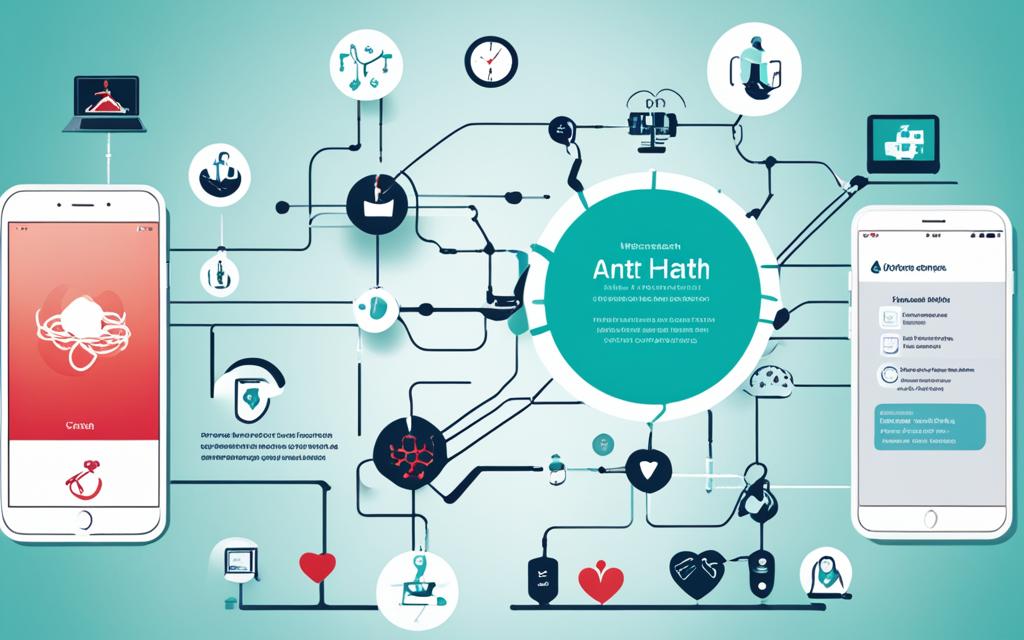
Conclusion
The ANT+ Protocol revolutionizes fitness and health monitoring in personal area networks, providing seamless connectivity and facilitating the capture and transfer of critical sensor data. With its advanced device profiles, low power consumption, and interoperability infrastructure, ANT+ enables devices to communicate effortlessly, enhancing the user experience and improving the accuracy of data collection.
One of the remarkable applications of the ANT+ Protocol is its integration into telemedical and telehealth systems, enabling remote monitoring and significantly reducing healthcare costs. Through ANT+ remote monitoring, patients can receive timely and accurate medical attention without the need for constant physical presence. This innovation greatly improves patient care while optimizing healthcare resources.
As the demand for wireless body area network sensors continues to grow, ANT+ remains at the forefront of seamless connectivity and remote monitoring technologies. Its standardized communication platform and compatibility with a wide range of devices and sensors make it an essential component for the future of healthcare monitoring and management, promising a more efficient and effective healthcare system.
FAQ
What is the ANT+ Protocol?
The ANT+ Protocol is an innovative wireless technology developed by ANT Wireless that supports running dynamics and heart rate monitoring in fitness devices. It allows manufacturers to implement ANT+ device profiles to provide advanced metrics such as cadence, ground contact time, and stride length to runners.
How does the ANT+ Protocol enable wireless connectivity?
The ANT+ Protocol, built on the ANT protocol, establishes an interoperability infrastructure that enables seamless wireless connectivity between ANT+ enabled devices. It defines device profiles that specify data formats and channel parameters, allowing for easy collection and transfer of sensor data in various applications.
What are the technical details of the ANT+ Protocol?
The ANT+ Protocol operates in the 2.4 GHz ISM band and uses a wireless communications protocol stack that establishes standard rules for co-existence, data representation, authentication, and error detection. It supports three types of messaging and can be configured to spend long periods in a low-power sleep mode, making it suitable for sensor networks.
How is the ANT+ Protocol utilized in telemedical and telehealth systems?
The ANT+ Protocol has been successfully implemented in telemedical and telehealth systems, such as the i-Residence system developed by Spantec. It allows for the detection of medical emergencies in nursing homes, hospitals, and private households using ANT+ compatible devices. The system can detect and classify emergencies and send alerts to rescue centers, relatives, or neighbors via phone, SMS, or visual interface.
What are the benefits of using the ANT+ Protocol in personal area networks (PANs)?
The ANT+ Protocol facilitates seamless connectivity between ANT+ enabled devices in PANs, enabling the capture and transfer of critical sensor data. It provides advanced device profiles, low power consumption, and an interoperability infrastructure, making it ideal for fitness and health monitoring. The protocol also reduces healthcare costs and improves patient care through remote monitoring in telemedical and telehealth systems.



